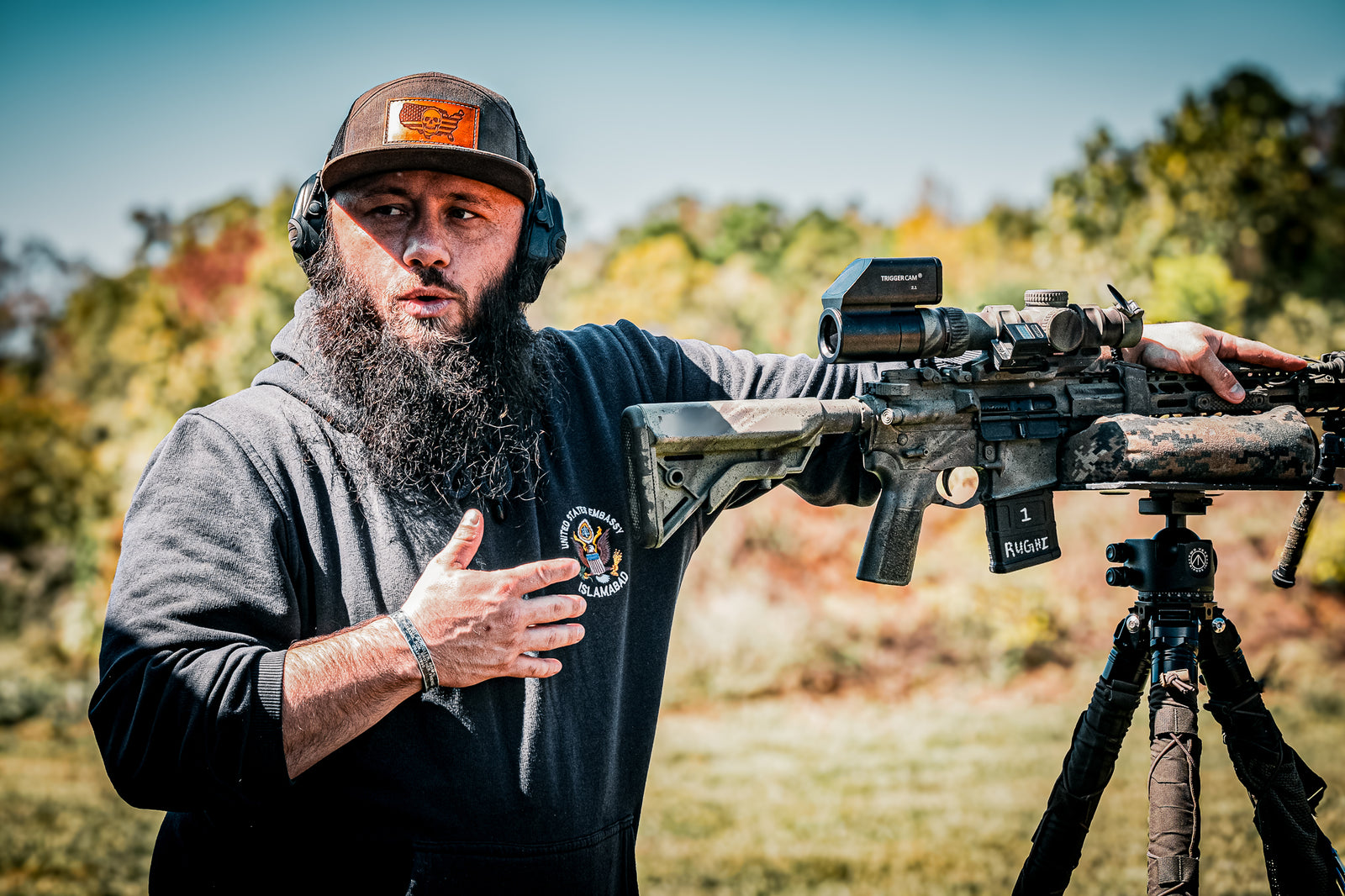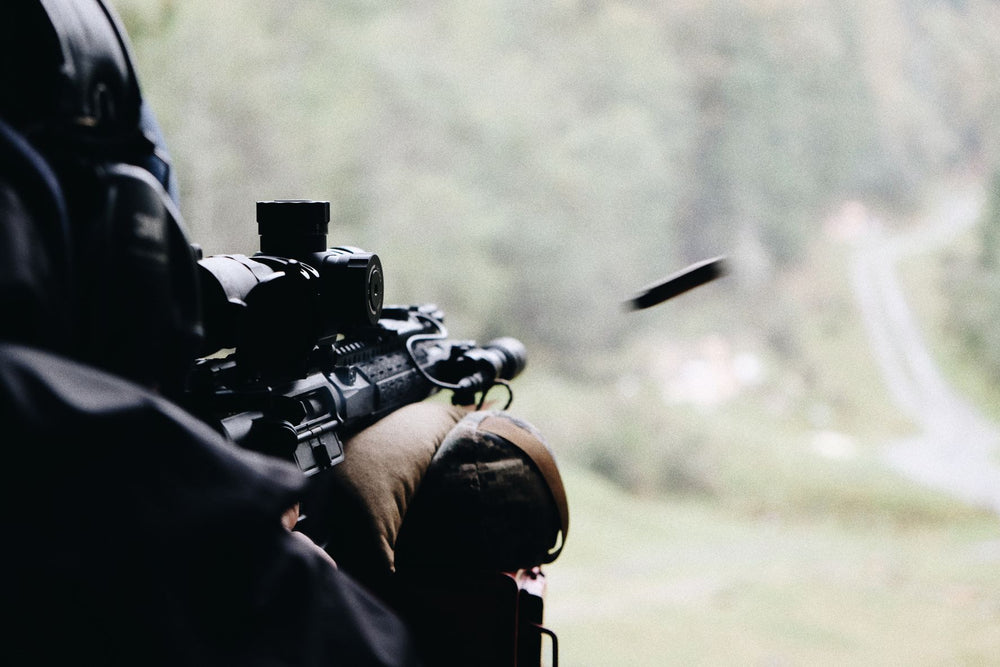The American Rifle: Uniting the Nation with the Ideal Firearm for Hunters and Defenders

THE STANDARD ISSUE AMERICAN RIFLE OF OUR AGE
A common question I have received over the years has been “I can only afford one-gun, what gun can I get that I can hunt and defend with?” The answer I give every time has been “you need more than one because of (insert all the reasons here) and that budgeting is what you will need to do.” Which is the truth. All the factors needed to be considered for these different tasks lead to the eventual answer of more than one is needed. Why is this important, you may ask. The right of every American to be armed and trained is reason enough. However, that comes with the responsibility to train to be confident in applying the skill when the call arises. 
The canyon between the needs of hunting and defense comes down to a few things. 1. The size of the weapon. From the length to the weight and how easily one can maneuver in a home, city or in the natural environment. It’s difficult to wield the classic Remington 700 30’06 in an apartment or out of a vehicle. Another reason is the typical hunting caliber is also less than ideal for its over penetration in the home as well. The bolt action is another factor to consider, it does not make it ideal for clearing a home or suburb. These are 3 big reasons that make it difficult to blend the two together.
What if, for whatever reason, “there can only be one!?” What would that firearm look like? The first consideration that came to mind was logistics. What is the availability for parts, ammo, firearms, optics, gear, needed to support a platform of this type? It must be extremely common. Other than being able to find what is needed anywhere, the main reason for this is if Americans have to “source” outside of what is normal today, the most likely calibers will be 5.56, .308, 12ga and 9mm. Sticking with those is best. The market does support other calibers well enough now to make arguments for others as, however these are the most common from civilians to military and law enforcement.
ENGAGEMENT DISTANCES
The next consideration is the average engagement distances. According to the U.S. Census Bureau’s 2020 data, around 82% of Americans live in urban areas whereas 18% live in rural areas. The distances one could find themselves taking a shot are wildly different. Just imagine, in the city, you could be forced to take a shot across a street, or 15 yards and in. Versus, looking either left or right down that street and it could be several hundred yards to a mile long. Considering this and a lot of online research and discussions with professionals from a wide range of backgrounds, the consensus is “it depends.” My advice is as you go through your daily life observe your surroundings and discern a minimum and maximum distance in which you might have to engage a target.
TRAINING
Training. The next consideration to make is the training most Americans receive in marksmanship. Or, more accurately, don’t receive. This is a difficult thing to calculate. Drawing on online research, industry professionals as well as AI to assist in the research and personal experience with hundreds of shooters across the nation. The average American rarely shoots beyond a hundred yards or shoots more than 20 rounds a year when they are preparing for hunting season. In 2021 11 million Americans bought hunting tags. Most ranges across the United States rarely exceed 100 yards. If we use this as a measurement of what the average American can achieve in terms of marksmanship, it is very limited. To be clear, this is all speaking in generalizations.
CALIBER
Let’s start by narrowing this down by caliber. .308 while great for hunting has far too much penetration for any work inside an urban area. Though it is great for stopping vehicles. 9mm and 12ga aren’t versatile enough to do what is needed. 5.56x45 however is an extremely versatile round. Being capable of both long-range and close quarters engagements. One must only consider the bullet type they are employing. Not to mention it is one of the most common rounds. With modern bullet technology it’s possible to use rounds that can extend to 800 yards as well as rounds that won’t go through more than 2 layers of dry wall.
BARREL LENGTH
Some might ask why this is such an important aspect. To put it simply, barrel length relates to two important things. The first being the muzzle velocity. This tells a lot about what the rifle/bullet combo can do. Secondly, it’s about how easily maneuverable the rifle is in tight spaces. Such as in a house, hallways, urban areas, getting in and out of vehicles. There is another aspect we are forced to take into consideration. The restrictions some states have on barrel lengths. 16” is the shortest some states allow one to purchase “off the shelf” so to speak. It just so happens that is long enough to ballistically make it to 800yards and short enough to be manipulated in those tight spaces without too much trouble. The caveat to this is the 13.7” or 13.9” barrel lengths with a muzzle device pinned and welded to the barrel so that it brings the overall barrel length, legally, to 16”. The ballistic capability that these lengths have are still more than adequate to engage targets at distance.
ACTION TYPE
The action type is an obvious consideration to make. Bolt action simply won’t do for the low rate of fire. Lever action isn’t fast enough and induces more movement into sight alignment and sight picture. The other various types are simply too slow. That leaves semi-automatic. The most popular being the AR-15 pattern of rifles. There are other types out there, but we must remember what is most likely going to be found and easily replaced “in the wild.” As well as the relatively easy modification that can be made to fully automatic. The simple fact is the capability of having multiple shots on target quickly and accurately is needed both close and long range. For hunting and defense purposes. Since 5.56x45 is a smaller, less ideal round for hunting, bullet type and rapid shots are necessary to make up for this.
OPTICS
From red dots to high magnification optics to holographic and iron sights, there are a wide variety of different aiming devices on the market. The capability of each one enhances the shooters’ ability to engage targets at any given distance in a time efficient manner. Just as the drawbacks of each one makes it difficult for the shooter. What is needed is an optic that is capable of both close in and long-range engagements. A difficult blend to be sure. Too much magnification and close targets are difficult to engage. To little, farther targets become difficult to shoot, spot, reengage or even positively identify. Tools like magnifiers for red dots and holographic sights only offer so much in the way of aiding the shooter in their abilities. High powered optics limit what can be easily and quickly seen in close range due to a small, magnified field of view which loses situational awareness. Optics such as Low Powered Variable Optics (LPVO) work well to cover these bases. 1x magnification on the low range allowing for a full field of view of the target and surrounding area. The high range of magnification can vary from 4x to 10x. There’s even a 12x now but the fisheye effect is an increasing issue. The LPVO enables the shooter to spot misses, quickly correct their shot, and positively identify targets, making it a highly versatile piece of equipment. One extremely important aspect of an LPVO is the reticle. Needing to be capable of allowing the shooter’s eye to pick up the center point of aim quickly and confidently when engaging fast and close, it also needs to be capable of giving the shooter defined points of aim at distance with accurate measuring. Such as Mil Radian (MRAD) or Minute Of Angle (MOA). A Bullet Drop Compensating (BDC) reticle doesn’t work well for this because one change in the round type or velocity (I.E., differing barrel lengths) and the BDC becomes inaccurate, along with not having easily communicable measurements to give other shooters on the fly. With the advent of differing mounts, it is now easier to mount either a canted or 12’0 clock red dot in conjunction with the main optic giving another method of fast target acquisition.
SHOOTER
The last aspect to this combination for the American Rifle build is the Americans themselves. The Shooter. Now more than ever, in America, training is available to all. That is what makes up the biggest difference behind any firearm. The shooter. Let us be a nation of them.
Written by: John “Weapon Snatcher” Carughi





Leave a comment